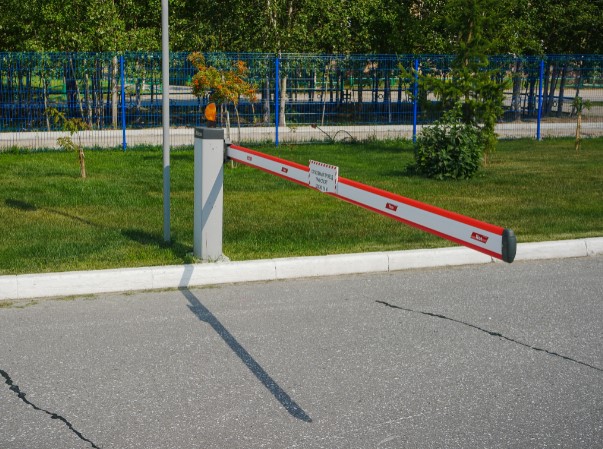Selecting the right barriers for high-security environments is critical for ensuring the safety and protection of assets, personnel, and sensitive areas. This process involves comparing various barrier options, considering their ability to deter, delay, or completely prevent unauthorized access. It is essential to evaluate the strengths and weaknesses of different systems, including their technological features, compatibility with other security measures, and their impact on the overall security posture. Making an informed decision requires understanding the security challenges and operational demands of each environment.
Types of Barriers
Different settings require different types of barriers designed to address specific security concerns. Physical barriers, such as fences, gates, and walls, are foundational elements that prevent or limit access to certain areas. Electronic barriers include surveillance cameras, motion detectors, and alarm systems, which provide real-time security updates and can trigger responses to breaches.
Advanced barrier solutions incorporate a mix of physical and electronic components to create a comprehensive security system. Bollards, for example, prevent vehicle entry while allowing pedestrian access. At the same time, retractable or automated barriers can adapt to varying security levels and traffic flows. Integration with access control systems ensures that only authorized individuals can deactivate or bypass these barriers.
When considering barrier systems for high-security environments, it’s important to evaluate:
- The specific threats and vulnerabilities of the environment.
- The intended purpose of the barrier (deterrence, detection, delay, or response).
- The level of visibility and aesthetic impact.
- The ease of use and accessibility for authorized individuals.
Consulting with security experts and conducting thorough site assessments can help identify the most appropriate barrier solutions. This ensures that the chosen systems effectively balance security requirements with operational functionality and budget constraints.
Integration with Existing Security Systems
The ability of barriers to seamlessly work alongside existing security measures can significantly enhance overall protection. This ensures that barrier systems are compatible with surveillance cameras, alarm systems, and access control technologies, allowing for a unified and efficient security operation. Such integration facilitates coordinated responses to security incidents, enabling quicker and more effective action when a threat is detected.
Effective integration requires careful planning and consideration of the technological compatibility and communication protocols between different security components. This ensures that all security system elements can communicate and operate without causing delays or vulnerabilities. For instance, barriers should be able to receive signals from surveillance systems to automatically activate in response to detected threats or to allow access to authorized personnel as verified by access control systems.
Beyond technological considerations, the integration of barrier systems with existing security measures must also take into account operational workflows and security protocols. Implementing new barrier solutions mustn’t disrupt established security operations or require extensive retraining of security personnel. Instead, these solutions should enhance the efficiency and effectiveness of security protocols, providing clear procedures for their operation and maintenance.
The integration process should include a thorough testing phase, ensuring that all security system elements work together as intended under various scenarios. This includes testing for physical threats and cyber threats, ensuring that the integration does not introduce new vulnerabilities into the security infrastructure. Proper integration strengthens the security posture of high-security environments by creating a cohesive and adaptable security system.
Durability and Maintenance Requirements
It is important that these barriers are constructed from materials capable of withstanding attempted breaches, environmental stressors, and regular wear and tear. This ensures longevity and continuous protection without frequent need for replacement or repair. High-grade materials, such as reinforced steel or crash-resistant compounds, are commonly used to provide robust resistance against impacts and environmental conditions.
Regular maintenance is equally important to ensure the ongoing effectiveness and reliability of barrier systems. Scheduled inspections and servicing can identify and rectify any wear, damage, or technical issues before they compromise security. Effective maintenance protocols will include routine checks, immediate repair of detected faults, and periodic upgrades to keep up with advancing threats and technological developments.
The choice of barrier systems must also consider the ease of maintenance and repair. Systems that require specialized tools or skills for upkeep may pose challenges, especially in remote or restricted areas. Solutions that offer modular components or are designed for easy access can significantly reduce downtime and maintenance costs.
Manufacturers and suppliers should provide comprehensive support and warranties for their barrier solutions. This ensures that any issues can be promptly addressed without significantly impacting the security or operations of the facility. A strong partnership with the provider will facilitate ongoing support, updates, and enhancements, ensuring the barrier systems remain effective over their lifespan.
Cost Comparison and Budget Considerations
Balancing the initial investment against the long-term benefits and operational costs is necessary. Assessing the total cost of ownership, including installation, maintenance, and potential downtime, helps make informed decisions. Economical solutions may appear attractive initially but could incur higher maintenance or replacement costs over time.
Understanding the specific security requirements and potential threats is crucial for cost-effective investment. Overspending on unnecessary features or underinvesting in critical areas can lead to suboptimal security outcomes. A detailed risk assessment can guide the budget allocation to the most critical areas.
When considering different barrier solutions, it’s important to:
- Evaluate the longevity and reliability versus upfront costs.
- Consider the potential for scalability and future upgrades.
- Assess compatibility with existing systems to avoid additional expenditures.
- Factor in maintenance, repair costs, and operational efficiency.
Engaging with reputable suppliers and considering financing or leasing options can provide flexibility in budget management, allowing for acquiring high-quality barrier solutions without compromising financial stability or operational security.
Speed and Ease of Installation
Quick and straightforward installation processes can significantly reduce downtime and security gaps during setup. To streamline installation, it is beneficial to select barrier systems that are pre-assembled or require minimal on-site assembly.
Selecting barriers compatible with the terrain and existing infrastructure minimizes the need for extensive modifications or construction work, further speeding up the installation process. It also helps in avoiding unexpected costs and delays.
Opting for systems that offer user-friendly interfaces and clear instructions can facilitate quicker adaptation and reduce errors during deployment.
Considering the future expansion or modification of security systems during the initial installation can save time and resources in the long run. Opting for modular and adaptable barrier solutions can provide flexibility and ease of upgrades without requiring complete system overhauls.
Regulatory Compliance and Safety Features
Adherence to local, national, and industry-specific regulations ensures legal compliance and enhances safety. Understanding the legal requirements and standards applicable to barrier installations, such as crash ratings and emergency access, is vital.
Barriers must incorporate safety features to prevent accidental harm to authorized personnel or bystanders. Features like emergency stop mechanisms, safety sensors, and visual or auditory warning signals are crucial. These features not only protect individuals but also reduce the facility’s liability.
Documentation and certification from recognized authorities can attest to the compliance and safety of barrier systems. Choosing certified solutions assures their effectiveness and reliability in critical situations.
Regular safety audits and compliance checks help maintain high safety standards and ensure ongoing adherence to regulations. This proactive approach minimizes risks and underscores the commitment to security and safety within high-security environments.
Contact R3 Access
At R3 Access, we understand the critical importance of securing high-security environments with the most reliable barrier solutions. Our team is dedicated to offering comprehensive support and guidance throughout the selection, installation, and maintenance process. With a wide range of advanced barrier systems and a commitment to excellence, we strive to meet the highest security and customer satisfaction standards. Contact us today for further details on how we can assist with your security needs.


